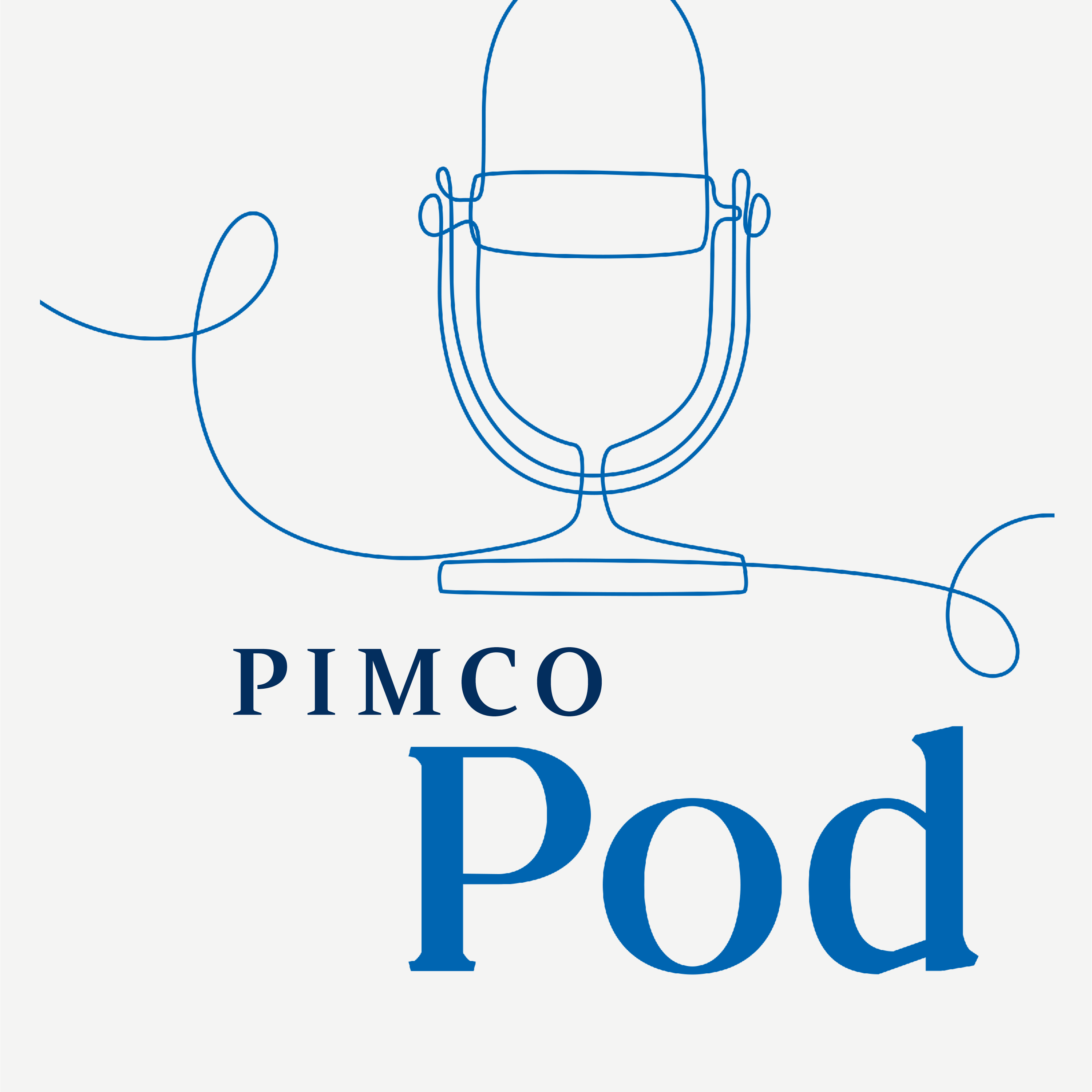Two recent high-profile bankruptcies of an auto lender and an auto parts company triggered loan loss announcements at a handful of banks. The sudden collapse of these companies has sparked wider concerns.
Since the news, spreads of lower-quality publicly traded debt have widened versus those of similar-maturity U.S. Treasuries. Also, equity prices of regional banks and publicly traded business development companies (BDCs) have come under some pressure, and the credit market has started to price some higher risk premium on certain segments of bank loans and securitized consumer credit products.
While these bankruptcies and losses appear idiosyncratic, these kinds of issues tend to surface when strong economy-wide growth fundamentals fade – as we are seeing now – and struggling companies and households can no longer mask underlying problems. The economic and policy backdrop in the U.S. – including slower (though still positive) growth, higher tariff-related costs, dramatic immigration policy changes, and still-elevated interest rates – is challenging pockets of the economy, with the effects just beginning to become more visible.
Ultimately, we believe the U.S. economy is in a position to weather these headwinds, especially once the income tax cuts and credits from the One Big Beautiful Bill Act start to provide support to households and businesses. In the overall U.S. economy, household and corporate debt-to-GDP and debt-to-wealth ratios are now stronger than before the pandemic, according to Federal Reserve data.
However, strong aggregate metrics mask a subtle shift toward riskier lending under the surface that poses risks: Post-pandemic credit rating “inflation” and the dramatic growth in private lending have meant that many borrowers who might not otherwise have had access to financing have gotten it. On top of that, the economic adjustments to recent policy changes will continue to challenge business models. Companies exposed to international trade or that were lifted by the immigration boom are particularly vulnerable. Lower-income households that are not participating in equity market gains or whose labor income is exposed to affected sectors could also face challenges.
The broader markets still appear relatively sanguine about these risks, despite the recent repricing in specific areas of credit and equities.
Backdrop: Strong post-pandemic fundamentals supported riskier lending
How did markets get here? The U.S. economy performed very well in the years following the pandemic. Massive pandemic-related government transfers to households and businesses strengthened private sector balance sheets. We also saw slower pass-through of higher interest rates to households due to a large pool of long-term fixed-rate mortgage debt, plus an immigration boom bolstering both the supply and demand side of the economy. All these trends contributed to stronger U.S. real GDP performance relative to other developed markets.
This U.S. “exceptionalism” also likely contributed to an expansion in riskier lending, including private lending to riskier small and middle-market businesses. Lenders offered more flexible credit arrangements, including upfront payment-in-kind (PIK) interest payment plans, to manage high interest rates. Many companies that likely couldn’t get financing in public markets or through direct bank loans secured financing in the private markets, while banks increasingly lent to financial intermediaries such as BDCs instead of underwriting more expensive direct-to-corporate loans.
The net result was a shift in credit from banks and public markets to private lending, which blunted the pass-through of tighter monetary policy into the real economy. According to Federal Reserve financial accounts, economy-wide nonfinancial corporate credit outstanding at 142% of GDP is 7 percentage points (ppts) lower than before the pandemic. By contrast, private credit, an estimated $2.7 trillion subset of the total corporate debt outstanding, is up almost 1 ppt relative to GDP since before the pandemic. Over the past 10 years, a little over half of the growth in total corporate debt relative to GDP has been associated with private credit.
These dynamics were mirrored in consumer lending as U.S. households also benefited from post-pandemic economic growth. In addition to pandemic-related fiscal supports and student loan forbearance, many households saw stronger wage gains (especially if workers switched jobs), while faster home price appreciation created wealth gains even for households that do not participate in the stock market.
These factors drove a mechanical improvement or “inflation” in U.S. consumers’ credit scores, which on average rose by about 10 to 15 points immediately following the pandemic (according to Equifax), with previously lower-credit-quality borrowers enjoying greater gains. These inflated credit scores resulted in a shift toward riskier lending despite lower aggregate household debt-to-GDP levels. Since then, delinquency rates for consumer credit products have risen, especially for 2021–2022 vintages issued at the peak of this improvement in credit scores.
Policy changes create vulnerabilities
Over the past year, the post-pandemic U.S. economic exceptionalism has faded – real GDP growth has downshifted from a 2.5%–3% pace to 1.5%–2%, according to the Bureau of Economic Analysis and our estimates. Material changes in trade and immigration policies are challenging many business models. As companies become convinced that tariffs, taxes, and immigration policies are here to stay, they’ll likely adjust their strategies – some with more success than others.
The recent high-profile bankruptcies and the timing of their collapse are consistent with this changing macro backdrop, although these cases were also allegedly exacerbated by inconsistencies in collateral accounting and pledges. One of the collapsed companies primarily focused on subprime auto lending to borrowers with short credit or no credit histories and to immigrants who may have been affected by broader U.S. policy changes this year. “Geopolitical uncertainty and headwinds from newly imposed tariffs” were cited as challenges that contributed to the auto parts firm’s bankruptcy.
At the same time, asset quality has come into focus in third-quarter earnings announcements when some banks reported losses relating to these two bankruptcies, as well as smaller issues of missing or mispledged collateral on commercial real estate and commercial and industrial (C&I) loans at a handful of regional banks. BDC equities have also sold off recently; investors may be more concerned about the interest income generated by the underlying loans amid still-elevated PIK interest expensing arrangements and expectations of lower interest rates.
On top of this, prices of bank loans trading in the secondary market have started to diverge, with the auto and chemicals sectors seeing more loans trading at distressed or discounted levels. The chemicals sector, which is very exposed to global industrial production cycles and international trade, has seen roughly 20% of loans trade in the range of 80 to 90 cents on the dollar, according to Intex and Markit data. This indicates heightened credit concerns, although not necessarily distress (yet).
Over the past year, consumer fundamentals have also shifted. Although U.S. household balance sheets in aggregate still look very strong, the gaps between different household groups appear to be widening. Labor markets have cooled, real labor income growth has decelerated to a roughly 1% year-over-year pace, and net hiring has ground to a halt, according to U.S. Commerce Department data.
This has coincided with a greater deceleration in nominal wage gains in lower-income jobs, despite still-elevated inflation. Also, the accelerated house price appreciation that supported homeowners (66% of Americans own their primary residence, according to the Census Bureau) has begun to taper off. Equity market gains are boosting wealth for higher-income households, but relatively few Americans (21%, according to Federal Reserve data) have any exposure to equity markets outside of retirement accounts. Aside from a recent acceleration in spending for high income households, likely supported by equity market gains, U.S. consumer spending appears weak.
The net result of all of these developments appears to be more stress for small to middle-market businesses, lower-income households, and people who don’t own homes. Delinquencies and defaults are rising more significantly for these groups, despite the dramatic rebound in broad U.S. equity indexes, including the S&P 500, since the initial April tariff announcements – with more stress potentially to come.
Bottom line
Recent bankruptcies along with price movements in some areas of credit and equity markets underscore the widening gap between winners and losers in the U.S. economy. Although overall corporate and household debt outstanding as a percentage of GDP is lower today than before the pandemic, the mix of lending – which shifted away from banks toward nonbank and private markets with more lenient underwriting standards – creates vulnerabilities, especially amid macroeconomic adjustments likely to follow policy changes.
While we ultimately expect the U.S. economy to strengthen next year, supported by offsetting tax breaks for some, macroeconomic shifts likely won’t be painless for everyone. The pockets of vulnerability mean the outlook for the U.S. economy isn’t without risks.
Broader market pricing appears relatively sanguine about these risks. The S&P 500 is up 15% this year, broader credit yield spreads over Treasuries are still tight (despite some recent repricing), and the shortest-dated interest rates tied to expectations of the path of monetary policy price in very little risk that the Fed will need to cut interest rates more aggressively. We currently anticipate a gradual path of rate cuts, but just how smoothly these economic adjustments will proceed is uncertain.
The upshot of this currently complicated situation is that there are ample opportunities for investors. For example, we favor select investments backed by higher-credit-quality consumer loans and other forms of collateralized lending, when underwritten properly. Still-elevated yields of high-quality bonds, both in the U.S. and abroad, allow investors to build resilient portfolios while still targeting attractive returns. Elevated yields mean market interest rates don’t have to fall to generate compelling income, while if greater macro risks emerge, price appreciation potential in fixed income may offer an attractive hedge against risk asset underperformance. Across a range of scenarios, bonds should be well-positioned to deliver for investors.




